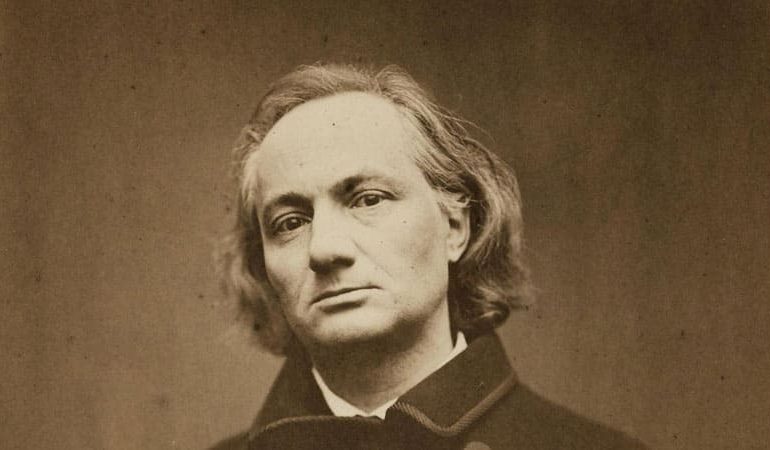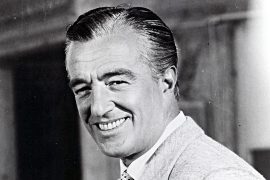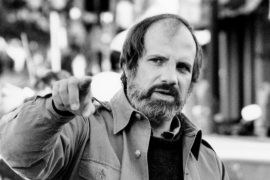The invention of photography not only enjoyed great popularity. The more in demand she became, the more critics there were – like the writer and art critic Charles Baudelaire.
Baudelaire was born in Paris on April 9, 1821. His biography depicts a rather depressed contemporary. One reads about drugs, lack of money, father problems and a suicide attempt. He died at the age of 46 from the long-term effects of syphilis. However, he did not spend his short life idly.
His work includes, among other things, the cycle of poems “The Flowers of Evil” and several essays, reviews, author portraits. He translated Edgar Alle Poe into French for the first time and was an enthusiastic revolutionary.
What is interesting for us is his critique of photography from “Der Salon” from 1859. In it he writes that photography is misjudged as art and is increasingly threatening painting. To create art, imagination was important to him. He could not imagine fantasy in connection with the technical camera.
Since the photographic industry was the refuge of all ailing painters whose talents or diligence were not sufficient to complete their studies, this general overestimation not only bore the mark of blindness and imbecility, but it also had a tinge of revenge . Charles Baudelaire; from: The Salon 1859
As a result, photographers were not artists for him, but on the contrary untalented or even lazy painters who had achieved nothing and now devoted themselves to commercial photography. However, Baudelaire did use the new technique, which is why there are several well-preserved daguerreotypes by well-known photographers such as Nadar.
I wonder what Baudelaire would do and write today. I imagine that not much would change: He lives in Paris, like back then with drugs and prostitutes. On the side, he writes for small left-wing magazines to keep himself afloat and in them eloquently criticizes the contemporary art scene.
And the photography? Baudelaire’s thoughts are still relevant, given the many discussions here and in other magazines. On the one hand, it’s about perfect focus areas. It is now possible to depict reality even more precisely than the human eye can perceive. Technology is often the focus.
On the other hand, there are also photographers who don’t care about showing reality. They try to transport feelings and emotions with their pictures. Perhaps Baudelaire could have enjoyed it after all, would have gone off with a Polaroid camera or some other camera and taken blurry, experimental pictures where you can hardly see anything.
It’s only speculation, of course, but in any case it’s interesting that many photographers today attribute to the first photos, which Baudelaire so criticized at the time, because of their lack of perfection, what he denied them: imagination.
What was Charles Baudelaire known for?
His most famous work, a book of lyric poetry titled Les Fleurs du mal (The Flowers of Evil), expresses the changing nature of beauty in the rapidly industrializing Paris during the mid-19th century.
Who inspired Charles Baudelaire?
- Victor Hugo
- Gustave Flaubert
- Edgar Allan Poe
- Marquis de Sade
- Emanuel Swedenbo
- Joseph de Maistre
How did Baudelaire define modernity?
For Baudelaire, modernity encapsulates the “ephemeral, the fugitive, the contingent half of art” which serves to elucidate the “eternal and the immutable”; it entails observing and engaging the transient to gauge, understand and appreciate the perpetual.
How did Charles Baudelaire influence TS Eliot?
Therefore, as a symbolist poet, Charles Baudelaire influenced T.S. Eliot and like Baudelaire T.S. Eliot focused on the brokenness and falseness of modern experience and he found symbolism close to his era, therefore he took some essential parts as an inspiration.
Who is the father of symbolism?
Symbolism began as a literary movement in France in the 1880s during a period of enormous change and upheaval in Europe. The term first came into circulation in 1886 when the poet Jean Moréas published his ‘Symbolist Manifesto’ in the Parisian newspaper Le Figaro.
What type of poems did Baudelaire write?
In the 1860s, Baudelaire continued to write articles and essays on a wide range of subjects and figures. He was also publishing prose poems, which were posthumously collected in 1869 as Petits poèmes en prose (Little Poems in Prose).
What does the word Baudelaire mean?
A writer of poems
Is Baudelaire a romantic?
Baudelaire is fundamentally a romantic in both senses of the word—as a member of an intellectual and artistic movement that championed sublime passion and the heroism of the individual, and as a poet of erotic verse.





